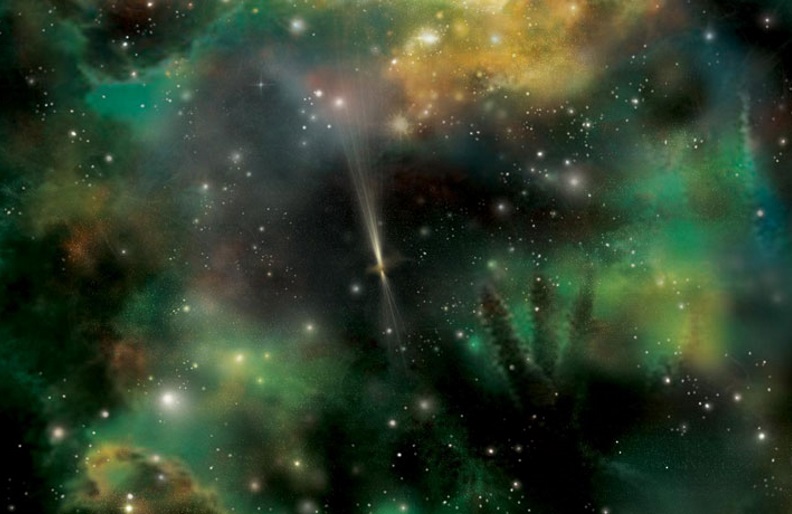Astronomers have measured all the starlight that has managed to escape into space over the history of the universe.
It amounts to 4 x 1084 particles of light, or photons. That’s roughly equivalent to all the photons the sun would emit if it burned for 100 billion trillion years — long beyond the 5 billion years it has left. The universe itself is only 13.7 billion years old.
Measuring all those stray photons and figuring out when they were emitted can help astronomers write a timeline of star formation across the last 11 billion years, since the first stars were born, astrophysicist Marco Ajello of Clemson University in South Carolina and colleagues report in the Nov. 30 Science.
Despite how dark the night sky appears, it contains the diffuse glow from photons emitted long ago from ancient stars, which astronomers call the extragalactic background light, or EBL (SN: 9/7/13, p. 22). That glow actually captures only a fraction of the photons ever produced in stars. Most stars are born in dusty environments, and most of their light is absorbed by the dust. The photons in the EBL are the lucky ones that made it out of the dust and have been traveling through space ever since.
And yet, because the universe is so huge, all that escaped light shines only as brightly as a 60-watt light bulb seen from a distance of four kilometers, Ajello says.
“The night sky is very, very dim,” says Ajello, but “it’s not completely dark.”
That light is too dim and spread out to spot directly, even with the most powerful telescopes. So Ajello and his colleagues looked for the EBL’s interaction with gamma rays emitted by powerful distant blazars. Blazars are active black holes that send white-hot jets of radiation streaming out into the universe. Their light can reach us from billions of light-years away.
To come up with a tally of the photons in the EBL, Ajello and colleagues used 10 years of data from the Fermi Gamma-ray Space Telescope. The team observed one gamma-ray burst and 739 blazars whose light reaches Earth from 0.2 to 11.6 billion years ago. Then they calculated how much the gamma rays had been absorbed or altered by collisions with photons in the EBL.
“This allows us to basically understand formation of galaxies and stars across the history of the universe,” Ajello says. For instance, the data confirmed that the universe was most rapidly making stars around 10 billion years ago, he says. The measurement could also help determine how fast the universe is expanding (SN: 3/4/17, p. 18).
Measuring the EBL provides an independent way to cross-check other measurements made with visible light telescopes, says astrophysicist Elisa Prandini of the University of Padova in Italy. “It’s a treasure, this huge dataset and this EBL measurement that they did,” she says. “It will be further used by the community.”
This article was originally published by Science News.

